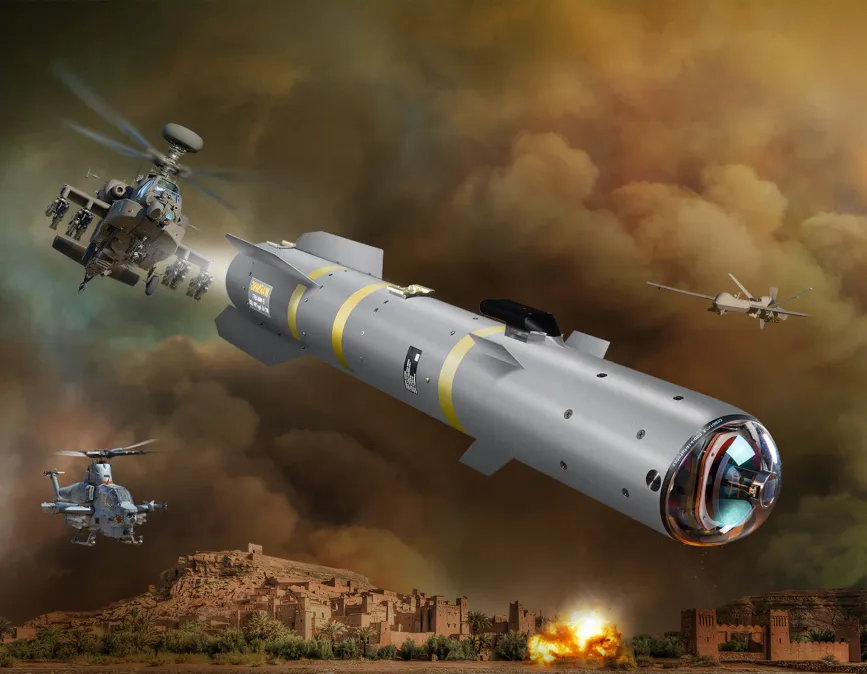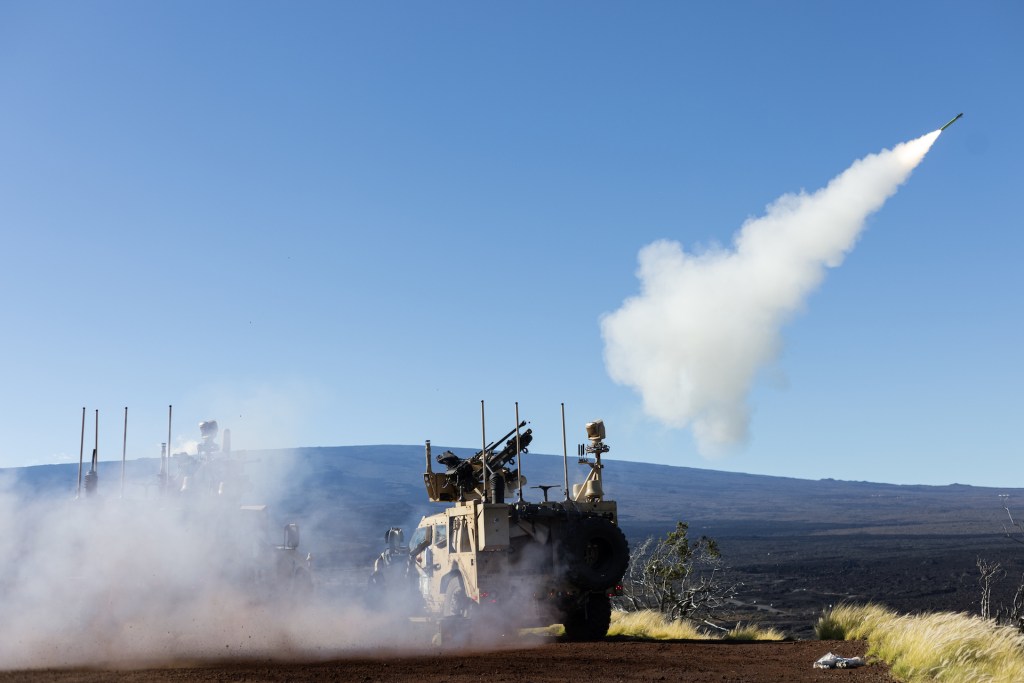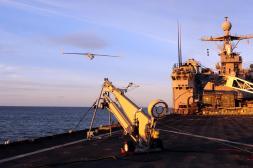Marines to give air-to-ground missile new counter-drone capabilities

The Marine Corps plans to upgrade an air-to-surface munition to give its helicopters more firepower to shoot down enemy drones, according to the service’s new aviation plan.
The U.S. military sees unmanned aerial systems as a growing threat that it expects to face on future battlefields, and it’s pursuing a variety of new tools to protect its forces.
For the Corps, that includes modernizing the AGM-179 Joint Air-to-Ground Missile.
The JAGM, built by Lockheed Martin, achieved initial operational capability on the Marines’ AH-1Z Viper attack helicopter in March 2022. According to the 2025 Marine Aviation Plan, which was publicly released Monday, the weapon is “the first true fire-and-forget air-to-ground capability for the H-1 fleet, significantly enhancing flexibility and lethality in contested environments.” The service is now looking to give it even more operational flexibility with new air-to-air capabilities.
“This missile will receive incremental upgrades, including funded efforts to add counter-UAS software and integration of a new electromagnetic control actuator section (EMCAS). The counter-UAS software upgrade improves air-to-air guidance and laser pulse logic to increase engagement capability against a wide variety of adversary unmanned systems,” officials wrote in the document, which was signed by Lt. Gen. Bradford Gering, deputy commandant for aviation.
The Corps is also pursuing a slew of other tools to boost its counter-drone arsenal. That includes enhancing its Advanced Precision Kill Weapon System II.
“APKWS II continues to provide a reliable, high-capacity precision guided munition for both the rotary wing and fixed wing communities. The program has now completely transitioned to the Single Variant Block Upgrade (SVBU) that will enable the same guidance unit to be used for any platform, as well as increasing the overall employment envelope. To improve performance against UAS, certification of a suitable proximity fuse is in work for fielding to the fleet with current guidance and warhead combinations. Additional demonstrations are also in work with the Army and Air Force to determine feasibility of adding additional guidance methods to the APKWS family, including passive infrared seekers,” officials wrote.
Additionally, the Marines are involved in the Army’s Next Generation Short Range Interceptor initiative that aims to replace the aging Stinger missile. The Army is conducting a competitive prototyping effort and anticipates introducing the capability in fiscal 2029, the document noted.
Low-altitude air defense systems, including counter-drone tools, are a key element of the Corps’ aviation plans.
“The Marine Corps is significantly increasing its investment in ground-based air defense capability in support of Force Design,” officials wrote, referring to the service’s modernization vision, which was previously dubbed Force Design 2030. “The result is exponential growth of the LAAD community and the development and acquisition of several major air defense systems … These systems provide credible, integrated, layered defense against threats from unmanned aerial systems, fixed and rotary wing aircraft, and cruise missiles.”
The service plans to activate additional littoral anti-air battalions in the coming years.
“As the LAAD community grows to meet the needs of Force Design, it will leverage defense innovation and technologies to provide anti-air warfare capabilities to defeat adversary reconnaissance and strike threats and protect MAGTF critical assets. The Marine Corps continues to invest in complementary emerging capabilities such as directed energy weapon systems and low-cost kinetic interceptors,” officials noted.
To better detect threats, the Corps is bolstering its sensing capabilities, including by acquiring TPS-80 Ground/Air Task Oriented Radar. The G/ATOR is a mobile platform that can identify drones and other aerial platforms and cue air defense weapons. The platform achieved initial operational capability in 2018 and is expected to reach full operational capability in fiscal 2028. The approved acquisition objective is 57 systems, according to the aviation plan.
Another technology in the works, known as the Medium Range Intercept Capability, is designed to defend fixed assets against drones, cruise missiles and other airborne threats. The Corps aims for full battery fielding to begin in fiscal 2026.
Meanwhile, the Marine Air Defense Integrated System is a mobile capability that includes a pair of Joint Light Tactical Vehicles. Officials described it as “the basic building block” of low-altitude air defense battalions’ ground-based capabilities.

The MADIS Mk2, a counter-drone variant, includes a multi-function electronic warfare capability, 360-degree radar, direct fire weapon, electro-optical infrared optic, and supporting command, control and communications suite, according to the aviation plan.
MADIS was slated to reach initial operational capability in fiscal 2025 and full operational capability in fiscal 2031. The approved acquisition objective is 190 systems.
A similar type of tool, the Light–Marine Air Defense Integrated System (L-MADIS), is a mobile set of technologies that includes a pair of Ultra-Light Tactical Vehicles. The upgradeable tech is “optimized” for use by for Marine Expeditionary Units, per the aviation plan.
L-MADIS is intended to shield maneuver forces, forward operating bases and other assets from drones in the Group 1-3 categories — which are on the smaller end of the UAS spectrum — as well as fixed wing and rotary wing aircraft. The system was slated to achieve initial operational capability in fiscal 2025 and full operational capability in fiscal 2028. The approved acquisition objective is 21 systems, according to the aviation plan.
Meanwhile, the Marines have set up a “fusion center” at their base in Quantico, Virginia, with an initial focus on counter-UAS technologies, as officials look to move new capabilities from the science-and-technology enterprise through the acquisition pipeline to fielding.






